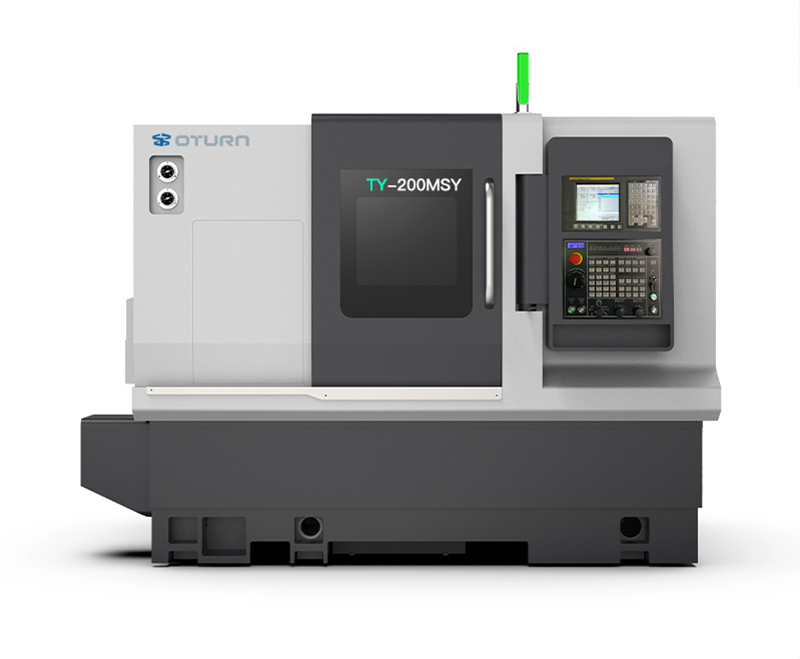In the field of machining, horizontal lathes, as a classic type of machine tool, have a long history. Many companies and factories still use traditional, conventional horizontal lathes to process shaft parts. So, what are your experiences and feelings when using a conventional horizontal lathe? This article will briefly introduce the advantages and disadvantages of conventional horizontal lathes, focusing on how CNC horizontal lathes can help you overcome the difficulties of traditional machine tools and improve production efficiency and machining quality.
Advantages of Conventional Horizontal Lathes
1. Intuitive and Simple Operation
Conventional horizontal lathes have a clear structure and intuitive operation. For experienced technicians, manual control of the turning motion allows for flexible adjustment of machining parameters based on experience to address special circumstances. Furthermore, the machine tools are sturdy and easy to maintain.
2. Low Investment Cost
Compared to automated and intelligent CNC horizontal lathes, conventional machine tools have a lower purchase cost, making them suitable for startups or workshops with limited machining needs, reducing initial capital pressure.
3. Efficient Machining of Specific Simple Workpieces
For shaft parts with relatively regular shapes that don’t require complex turning paths, conventional lathes can quickly complete basic turning operations, meeting some production needs.
However, these advantages also hide the numerous limitations of traditional horizontal lathes.
Have you used conventional horizontal lathes and encountered these issues?
1. Difficulty in Maintaining Machining Accuracy
Conventional lathes rely on operator experience and manual control, resulting in significant machining errors. This is especially true for parts with complex shapes or close tolerances, making it difficult to consistently achieve high precision. Significant differences in machining performance between technicians can affect product consistency.
2. Low Efficiency and High Labor Intensity
Many manual operations require long machining cycles. To ensure quality, technicians must monitor the machine for extended periods, which can lead to fatigue and high workload, hindering sustained and efficient production.
3. Large Re-Clamping Errors
Conventional lathes typically require multiple clamping and adjustments, leading to the accumulation of multiple positioning errors during machining, impacting final dimensional accuracy. This is particularly noticeable for parts that require multiple machining steps.
4. Low level of automation, unable to meet mass production demands
With intensifying market competition and accelerating production pace, conventional lathes are unable to implement automatic tool changing and automatic material feeding, making their production flexibility and efficiency insufficient to meet the requirements of modern manufacturing.
So, why are more and more factories choosing CNC horizontal lathes? Here are several key reasons:
Compared to conventional horizontal lathes, horizontal CNC turning center integrate high precision, high efficiency, and intelligent production advantages, becoming a key tool for manufacturing companies to enhance their competitiveness.
1. High-precision and stable machining
CNC systems use precise program control to achieve precise tool and workpiece motion trajectories, significantly improving machining accuracy and repeatability, ensuring consistent dimensions for each batch of parts and meeting stringent tolerances.
2. Significantly improved production efficiency
Automatic tool changing and multi-axis linkage reduce changeover time and non-machining time, allowing multiple processes to be completed in a single clamping operation, reducing manual intervention, facilitating mass production, enabling continuous machining, and significantly increasing production capacity.
3. Reduced Labor Intensity and Improved Operational Safety
CNC machine tools are easy to operate. Programs run automatically after programming, eliminating the need for operators to monitor the machine for extended periods. This creates a safer operating environment, frees up human resources, and reduces human error.
4. Greater Processing Flexibility and Functional Integration
CNC horizontal lathes are typically equipped with multifunctional toolholders that support combined machining operations such as turning, milling, and drilling, meeting the integrated processing needs of complex parts.
This reduces handling and multiple clamping operations, saving time and costs.
5. Intelligent and Digital Support, Empowering Industry 4.0
Advanced CNC systems seamlessly integrate with factory management software, enabling remote monitoring, online diagnostics, and data collection. This helps companies build digital workshops and improve overall manufacturing capabilities.
Conclusion
While conventional horizontal lathes still have their uses in certain situations, particularly when funding is limited or for single-piece, small-batch processing, they suffer from unstable machining accuracy, low efficiency, and high labor intensity, making them difficult to meet the high-quality and high-efficiency requirements of modern manufacturing. Choosing a high-performance CNC lathe can significantly improve machining accuracy and productivity, reduce labor costs, and ensure consistent product quality.
Our extensive horizontal CNC lathe portfolio, encompassing a variety of models and configurations, can meet your machining needs, from simple shaft parts to complex, multi-process parts. Whether you’re in the aerospace, automotive, or precision mold industries, we offer a solution to meet your diverse machining challenges.
Post time: Aug-04-2025








